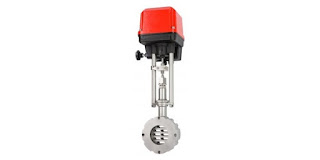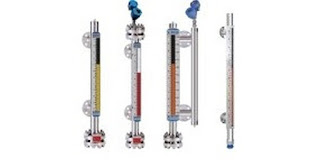NJ 908-755-6700
PA 610-363-6200
A blog specializing in pressure, temperature, level and flow instrumentation, control valves, process analyzers, and all other areas of process measurement. Courtesy of Miller Energy, a New Jersey, New York, Pennsylvania, and Ohio process instrumentation Rep and Distributor.
 |
| Bimetal thermometers have a place in modern process measurement systems. Image courtesy Wika |
 |
| A special version of the Magnetrol Eclipse 705 is configured for hygienic applications. Image courtesy Magnetrol |
 |
| The Yokogawa Users Conference for North America will be held on September 10 - 13 in Orlando, FL |
 |
| Mass Flow Controller - Cutaway View Image courtesy Brooks Instrument |
 |
| Pulsar R86 non-contact radar level transmitter. Image courtesy Magnetrol |
 |
| Composite construction, along with other targeted features, make the ASCO 212 Series a good choice for membrane water purification systems and equipment. Image courtesy Emerson - ASCO |
 |
| Flare monitoring requires specialized instruments to meet regulatory requirements. |
 |
| Coriolis flow meters deliver a mass flow measurement Image courtesy Yokogawa |
 |
| Coriolis mass flow controller Image courtesy Brooks Instrument |
National Instruments DeviceNet for Control interfaces are for applications that manage and control other DeviceNet devices on the network. These interfaces, offered in one-port versions for PCI and PXI, provide full master (scanner) functionality to DeviceNet networks. All NI DeviceNet interfaces include the NI-Industrial Communications for DeviceNet driver software, which features easy access to device data and streamlined explicit messaging. Use a real-time controller such as PXI and NI industrial controllers to create deterministic control applications with the NI LabVIEW Real-Time Module.
 |
| The Process Instrumentation Selection Tool from Yokogawa enables the user to make detailed product selections with a few clicks. Image courtesy Yokogawa |
 |
| A specially configured temperature sensor can improve measurement response and process control. Image courtesy Applied Sensor Technologies |
 |
| The AXW series of magnetic flow meters is available in a range of sizes with corrosion resistant lining. Image courtesy Yokogawa |
 |
| Solenoid valves for industrial process control applications Image courtesy Asco Valve |
 |
| Magnetrol's model 706 embodies the best of guided wave radar level measurement. Image courtesy of Magnetrol |
 |
| The sliding gate control valve is part of the Schubert & Salzer product line. Image courtesy Schubert & Salzer. |
 |
| Voltage ranging coils simplify the application of solenoid valves Image courtesy Emerson - ASCO |
 |
| The RACO remote alarm product line provides solutions for a wide array of applications. Image courtesy RACO Manufacturing and Engineering Co. |
 |
| Configurations of magnetic level gauges Image courtesy Orion/Magnetrol |